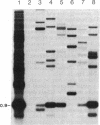Abstract
P elements, a class of mobile genetic elements that cause hybrid dysgenesis in Drosophila melanogaster, have thus far been shown to occur only in this species. Using whole genome blot analysis, we present evidence which indicates that sequences homologous to D. melanogaster P elements also occur in Drosophila paulistorum, a distant relative. D. paulistorum is considered a species complex, consisting of six known incipient species or semispecies. All six semispecies possess P element homologous sequences. We further show that there is conservation of restriction enzyme recognition sites between the D. melanogaster and D. paulistorum P element sequences. The presence of P elements in these two species may clarify the roles of recent invasion and rapid loss in the temporal distribution of P elements in Drosophila.
Full text
PDF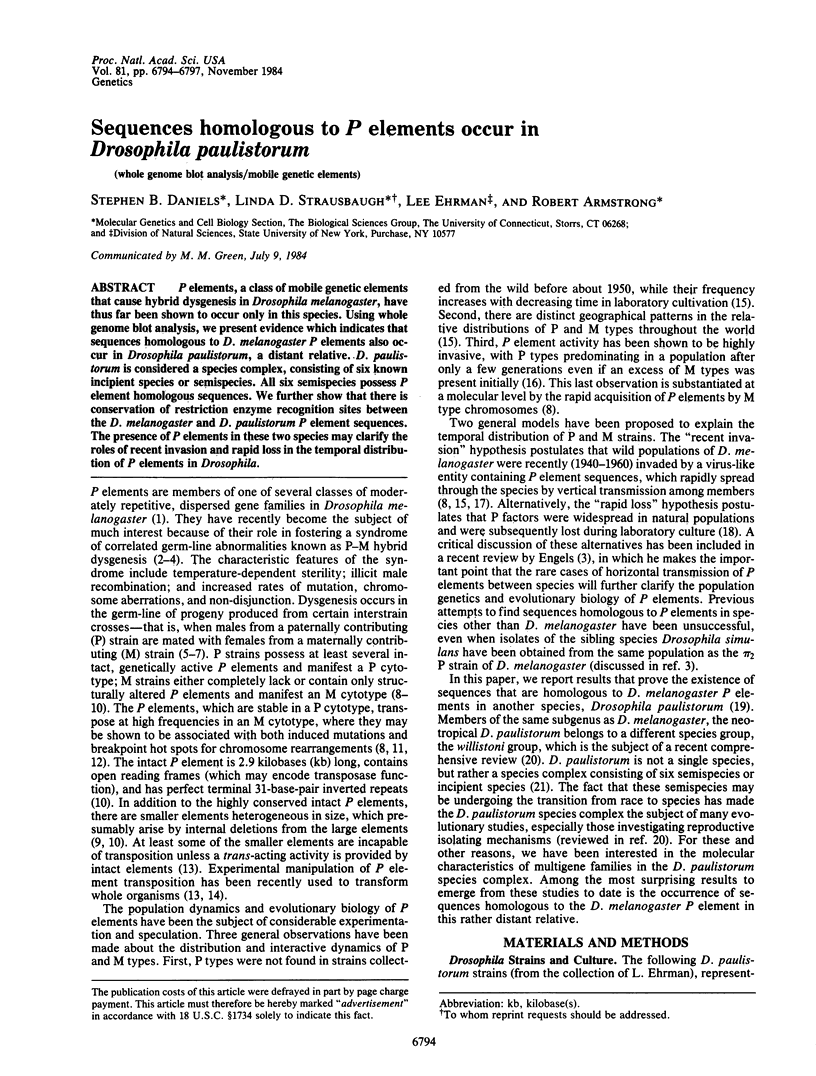
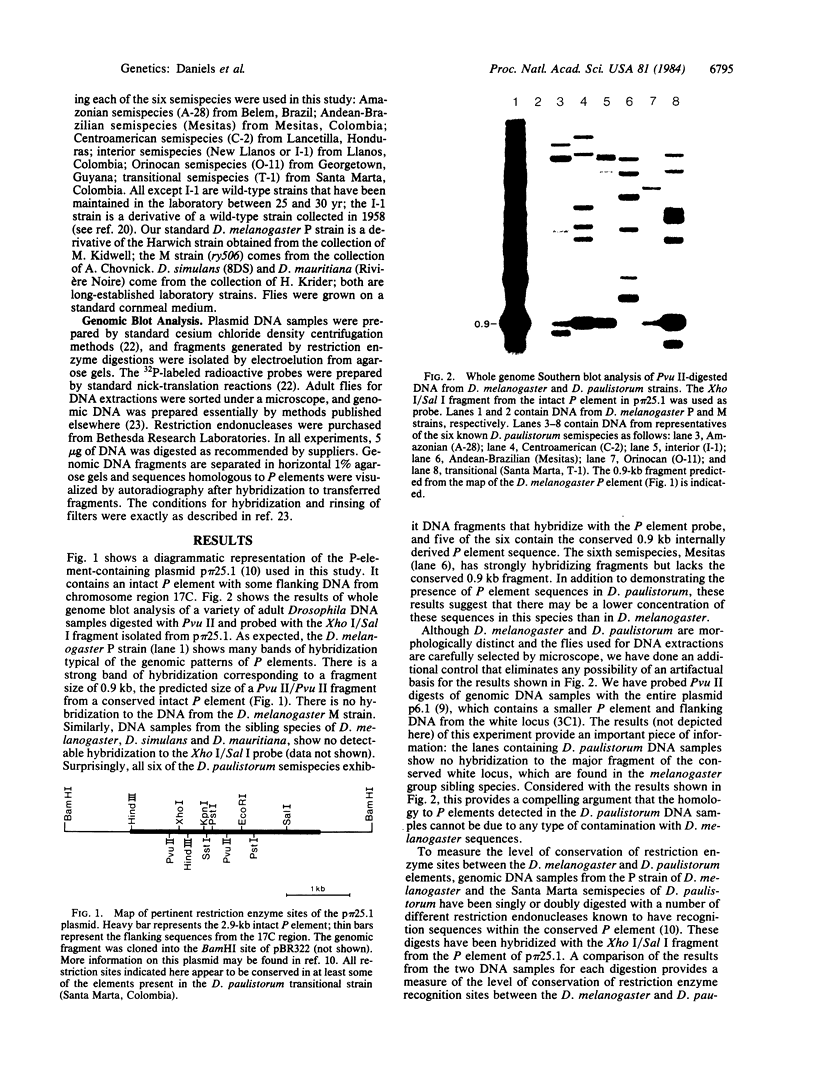
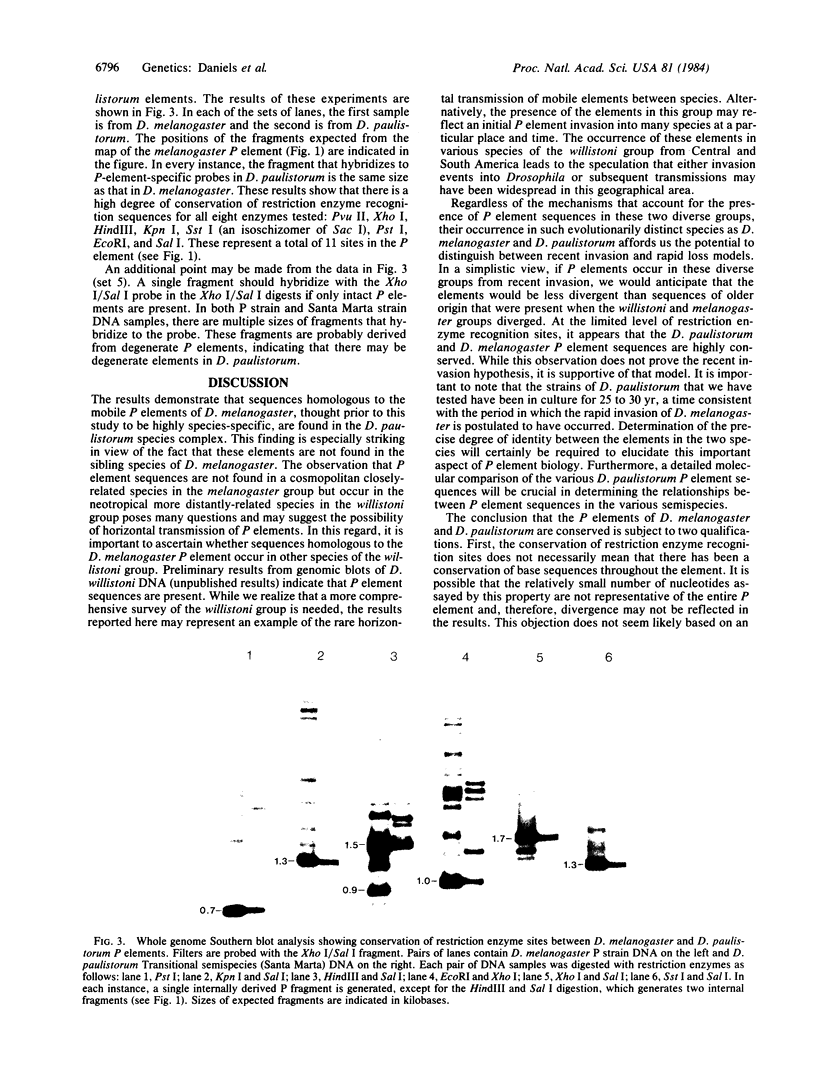
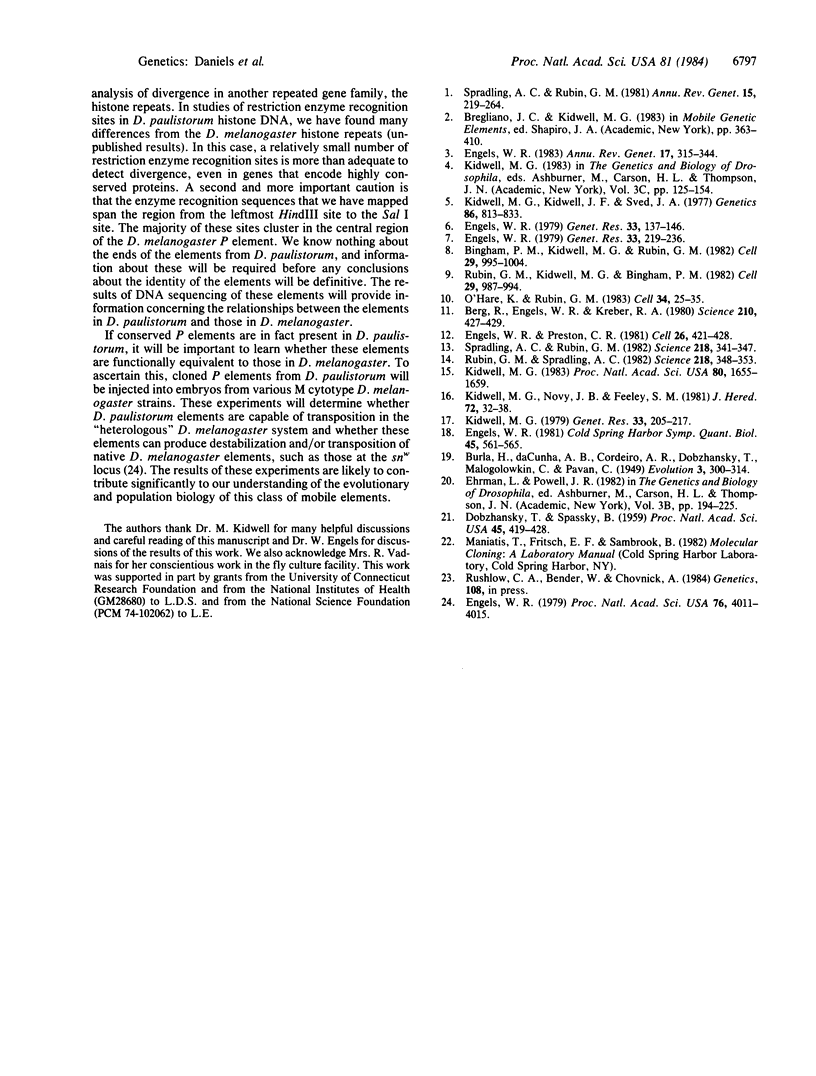
Images in this article
Selected References
These references are in PubMed. This may not be the complete list of references from this article.
- Berg R., Engels W. R., Kreber R. A. Site-specific X-chromosome rearrangements from hybrid dysgenesis in Drosophila melanogaster. Science. 1980 Oct;210(4468):427–429. doi: 10.1126/science.6776625. [DOI] [PubMed] [Google Scholar]
- Bingham P. M., Kidwell M. G., Rubin G. M. The molecular basis of P-M hybrid dysgenesis: the role of the P element, a P-strain-specific transposon family. Cell. 1982 Jul;29(3):995–1004. doi: 10.1016/0092-8674(82)90463-9. [DOI] [PubMed] [Google Scholar]
- Dobzhansky T., Spassky B. DROSOPHILA PAULISTORUM, A CLUSTER OF SPECIES IN STATU NASCENDI. Proc Natl Acad Sci U S A. 1959 Mar;45(3):419–428. doi: 10.1073/pnas.45.3.419. [DOI] [PMC free article] [PubMed] [Google Scholar]
- Engels W. R. Extrachromosomal control of mutability in Drosophila melanogaster. Proc Natl Acad Sci U S A. 1979 Aug;76(8):4011–4015. doi: 10.1073/pnas.76.8.4011. [DOI] [PMC free article] [PubMed] [Google Scholar]
- Engels W. R. Germ line aberrations associated with a case of hybrid dysgenesis in Drosophila melanogaster males. Genet Res. 1979 Apr;33(2):137–146. doi: 10.1017/s0016672300018267. [DOI] [PubMed] [Google Scholar]
- Engels W. R. Hybrid dysgenesis in Drosophila and the Stochastic loss hypothesis. Cold Spring Harb Symp Quant Biol. 1981;45(Pt 2):561–565. doi: 10.1101/sqb.1981.045.01.072. [DOI] [PubMed] [Google Scholar]
- Engels W. R., Preston C. R. Identifying P factors in Drosophila by means of chromosome breakage hotspots. Cell. 1981 Nov;26(3 Pt 1):421–428. doi: 10.1016/0092-8674(81)90211-7. [DOI] [PubMed] [Google Scholar]
- Engels W. R. The P family of transposable elements in Drosophila. Annu Rev Genet. 1983;17:315–344. doi: 10.1146/annurev.ge.17.120183.001531. [DOI] [PubMed] [Google Scholar]
- Kidwell M. G. Evolution of hybrid dysgenesis determinants in Drosophila melanogaster. Proc Natl Acad Sci U S A. 1983 Mar;80(6):1655–1659. doi: 10.1073/pnas.80.6.1655. [DOI] [PMC free article] [PubMed] [Google Scholar]
- Kidwell M. G., Kidwell J. F., Sved J. A. Hybrid Dysgenesis in DROSOPHILA MELANOGASTER: A Syndrome of Aberrant Traits Including Mutation, Sterility and Male Recombination. Genetics. 1977 Aug;86(4):813–833. doi: 10.1093/genetics/86.4.813. [DOI] [PMC free article] [PubMed] [Google Scholar]
- Kidwell M. G., Novy J. B., Feeley S. M. Rapid unidirectional change of hybrid dysgenesis potential in Drosophila. J Hered. 1981 Jan-Feb;72(1):32–38. doi: 10.1093/oxfordjournals.jhered.a109422. [DOI] [PubMed] [Google Scholar]
- O'Hare K., Rubin G. M. Structures of P transposable elements and their sites of insertion and excision in the Drosophila melanogaster genome. Cell. 1983 Aug;34(1):25–35. doi: 10.1016/0092-8674(83)90133-2. [DOI] [PubMed] [Google Scholar]
- Rubin G. M., Kidwell M. G., Bingham P. M. The molecular basis of P-M hybrid dysgenesis: the nature of induced mutations. Cell. 1982 Jul;29(3):987–994. doi: 10.1016/0092-8674(82)90462-7. [DOI] [PubMed] [Google Scholar]
- Rubin G. M., Spradling A. C. Genetic transformation of Drosophila with transposable element vectors. Science. 1982 Oct 22;218(4570):348–353. doi: 10.1126/science.6289436. [DOI] [PubMed] [Google Scholar]
- Spradling A. C., Rubin G. M. Drosophila genome organization: conserved and dynamic aspects. Annu Rev Genet. 1981;15:219–264. doi: 10.1146/annurev.ge.15.120181.001251. [DOI] [PubMed] [Google Scholar]
- Spradling A. C., Rubin G. M. Transposition of cloned P elements into Drosophila germ line chromosomes. Science. 1982 Oct 22;218(4570):341–347. doi: 10.1126/science.6289435. [DOI] [PubMed] [Google Scholar]



